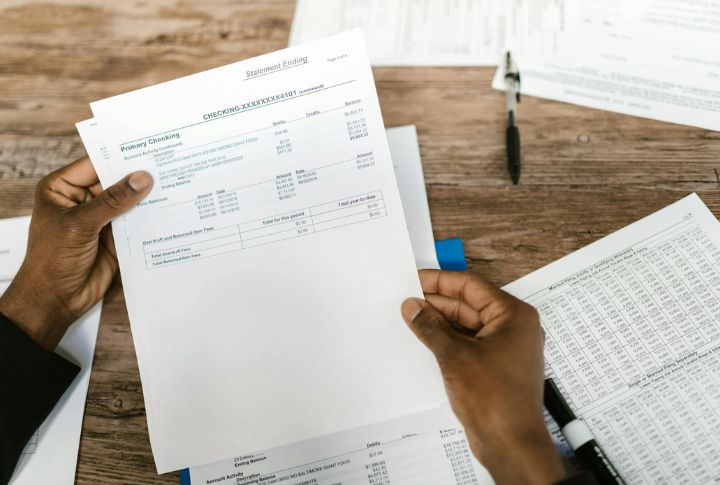Want To Save More? Try These 15 Budgeting Hacks

Saving money always sounds like a good idea—until you try to make it part of your actual life. One week, you’re determined, and the next, you’re staring at your bank app, wondering how it all vanished again. So, here are 15 budgeting hacks that make saving feel less like a struggle and more like second nature.
1. Define Your Purpose First

Before you mess with numbers, think about what you’re really trying to do with your money. Defining your goal early gives your budget direction. Without it, you’re just plugging numbers into boxes. And when you have a clear purpose, you start to see your spending differently.
Make money easier. Sign up for The Penny Hoarder’s newsletter today.
2. Pick A Budgeting Method That Fits

There’s no single right way to budget, and anyone who tells you otherwise probably hasn’t tried sticking to one themselves. Some people need the structure of knowing where every dollar is going. Others get overwhelmed by too many rules and prefer a looser approach. Try a few methods, and if it feels off after a week, ditch it.
More From The Penny Hoarder: 100+ Places That Will Give You Free Stuff on Your Birthday
3. Look At Past Spending Patterns

Budgeting without looking at how you’ve spent in the past is like setting up a diet without checking what’s in your fridge. You can’t fix what you don’t see. So, pull up your last couple of bank statements or credit card logs and scan for habits. Once you see the patterns, you’ll know exactly where to adjust.
More From The Penny Hoarder: 8 Ways Savvy Shoppers Are Outsmarting Inflation at the Grocery Store
4. Budget By Month And Paycheck

If you only look at your money on a monthly basis, you might miss the gaps in between. Paychecks don’t always line up neatly with bills, and that’s when the stress starts. Instead, try mapping out your budget by paycheck, too. Divide your month in half and plan what each check will cover. It’s like having two mini-budgets.
More From The Penny Hoarder: How to Save Money on Groceries: 25 Tools and Tricks to Save $100 or More
5. Use Separate Accounts For Spending

Setting up separate accounts helps give your money a job. One for bills, another for spending, and maybe even a third for savings. When your grocery money is the only thing in its account, you’re less likely to dip into it for things like impulse buys. It adds a layer of discipline without you having to do much.
More From The Penny Hoarder: Everything You Need To Know About Debt
6. Try The Cash Envelope System

There’s something about holding cash in your hand that makes spending feel real. When you pull a $20 bill from an envelope labeled “dining out,” you instantly feel the weight of the decision. It’s very different from tapping your card at the counter and barely noticing. And once the envelope is empty, that’s it.
More From The Penny Hoarder: How to Pay off Credit Card Debt in 2025
7. Plan For Irregular Expenses

You know what’s coming—even if it doesn’t happen every month. That yearly car registration or your kid’s summer camp. These aren’t surprises, but they sure feel like emergencies when you haven’t planned for them. Always create a mini category in your budget called “irregulars,” and toss a little into it each month.
More From The Penny Hoarder: Get Your Finances Together This Year With One of Our Favorite Budgeting Apps
8. Automate What You Can

Some financial tasks are boring. And if you leave them up to memory or motivation, they often don’t get done. That’s where automation saves you. Set up automatic transfers to your second account or bill payments that go out on payday. The less effort required, the more likely you’ll follow through.
More From The Penny Hoarder: Budgeting 101: How to Budget Money
9. Review Weekly For Overspending

A weekly check-in keeps you in control. Pull up your banking app every Sunday night or Monday morning. See where you went over and where you stayed on track. These little moments of awareness help you course-correct before it’s too late. Think of it as your money’s regular wellness check.
More From The Penny Hoarder: Our Picks for The Best Savings Accounts for This Month
10. Use Free Budgeting Apps

Many apps link directly to your bank and break things down by category. When you can see your spending at a glance, it’s easier to make smarter choices. Plus, setting up alerts or goals in an app can feel like a little nudge from your future self.
More From The Penny Hoarder: Our Picks for The Best High-Yield Savings Account for This Month
11. Do A No-Spend Challenge

Sometimes, the best way to understand your spending is to stop it—at least temporarily. A no-spend challenge helps you hit the reset button on your habits. Pick a category (like eating out or online shopping) and go without it for a week or two. You’ll probably notice how often you reach for your wallet out of boredom or habit, not necessity.
More From The Penny Hoarder: The Best Travel Credit Cards of 2025
12. Separate Needs And Wants

It’s easy to justify that new outfit or fancy gadget as a “need” at the moment. But learning to distinguish between what keeps you going and what simply makes you feel good is a core budgeting skill. Needs are your essentials—rent, food, transportation. Everything else is optional.
More From The Penny Hoarder: The Best Balance Transfer Credit Cards
13. Build A Pantry-First Meal Plan

Before you head to the grocery store, check your kitchen. Chances are, there’s enough in your pantry or freezer to build several meals. Get creative with what you have. Then, make a list of only what’s missing. This kind of “reverse planning” can seriously cut down on grocery bills. Plus, it prevents waste.
More From The Penny Hoarder: Smarten Up, Americans. No Offense But Millions of Us Haven’t Used These Money Secrets
14. Set Weekly Savings Goals

Big goals can feel overwhelming. But when you break them into bite-sized chunks—like saving a small amount each week—they become manageable. Decide on a number that feels doable and set it aside at the same time every week. Even if it’s just a few bucks, you’ll be surprised how fast it adds up.
More From The Penny Hoarder: If You Have More Than $1,000 in Your Checking Account, Make These Money Moves
15. Reward Your Budget Wins

Budgeting shouldn’t feel like punishment. So, choose a small reward that fits within your means. Maybe it’s a movie night, a fancy coffee, or a guilt-free afternoon doing nothing. The point is to celebrate progress. This way, budgeting becomes less about what you’re giving up and more about what you’re gaining.
More From The Penny Hoarder: What is Debt Consolidation — And Should I Consider It












